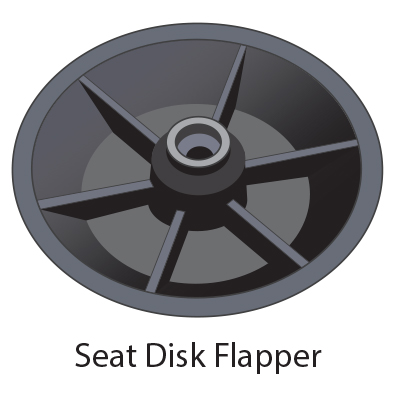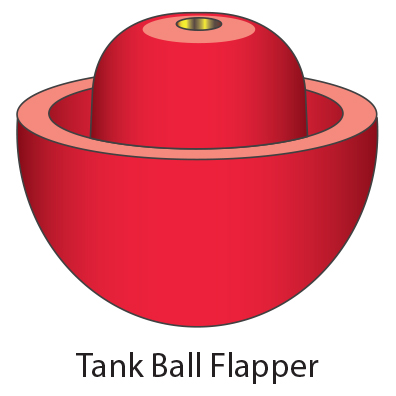 |
Water Conservation

Be a leak detective! There are simple things you can do to ensure you're not sending water and money down the drain.
Monitor your water bill for unusually high use. Your bill and water meter are tools that can help you discover leaks.
A. How to test if your toilet's flapper valve leaks.
A worn out flapper valve is the most common reason toilets leak. It is also one of the easiest things to determine. If you want to know whether your toilet is leaking due to a worn flapper valve, follow these steps:
- Add a few drops of food colouring to your toilet tank.
- Wait 10 minutes.
- Check the toilet bowl. If the food colouring appears in your toilet bowl, you have a leak.
B. How to fix a toilet leak caused by a worn flapper valve.
If you conducted the food colouring test and have determined you need to replace the flapper valve, follow the steps below. But first, you need to familiarize yourself with the three main types of flapper valves, including seat disk, tank ball, and standard rubber flappers.



- A seat disk toilet flapper is an older design that consists of a small circular disk that covers the flush valve.
- A tank ball flapper is easy to spot because it is essentially a small rubber ball that sits in the opening at the base of the toilet tank, like a toilet plug.
- The most common toilet flapper type is a standard rubber flapper, which typically attaches to the base of the overflow tube and sits over the flush valve opening. It is connected to a chain, which lifts the flapper when the toilet is flushed.
-
Purchase a new flapper that's the correct size for your toilet. Standard sizes are two or three inches. The date of manufacture and the gallons per flush usually determine the size of the flapper your toilet uses.
Date of Manufacture- Typically, toilets manufactured before 2005 have two-inch (2") flappers. Toilets manufactured after 2005 tend to use three-inch (3") flappers.
- This refers to how much water flows in and out of the tank when the toilet is flushed. It is important to know how many gallons your toilet uses and whether it is considered full flow or low flow.
-
This information can often be found:
- on the back of the tank
- behind the toilet seat
- on the underside of the tank lid
-
1.6 and 1.28 GPF toilets typically use 3″ toilet flapper valves.
If you happen to have a size other than these, try contacting the manufacturer to find out where to purchase a replacement flapper.
Note: On some flappers, there is an option to set the amount of water per flush.
Once you have your flapper:
- Turn off the water supply (rotate clockwise).
- Flush the toilet. This should reduce the amount of water in the tank enough for you to replace the valve.
- Remove the toilet lid.
- Disconnect the chain.
- Remove the flapper. The flapper will either have "ears" that are hooked over pegs, or it may have a ring that allows for it to be slid up or down the overflow tube.
- Replace with the new flapper (either hook the ears on to the pegs, or slide the ring down the overflow tube.
- Attach the chain, allowing for about ½" slack. Excess chain should be removed as it may get caught beneath the flapper and prevent the flapper from fully closing, causing the water to run continuously. Similarly, if the chain is too short, the flapper won't be able to fully close and again your water will run continuously.
- Turn the water supply back on and allow the tank to refill. The toilet should stop running when the tank is full.
- Flush the toilet and check to see the flapper closes properly.
- Replace the tank lid.
- Congratulations! You've finished the job.
